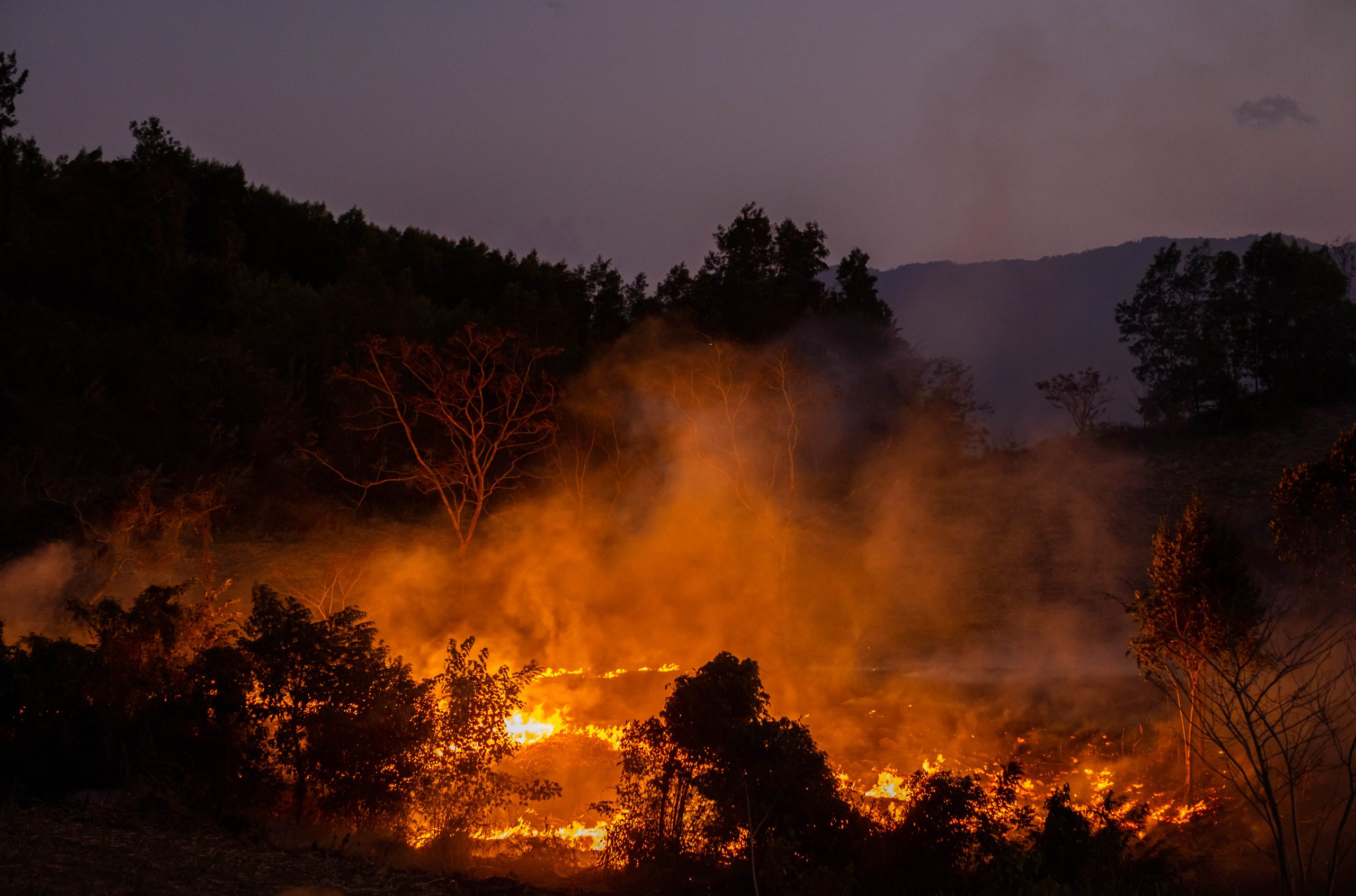Flames On The Move: Texas Panhandle Wildfires Consume 850,000
Embers in the Wind: The Unyielding Grip of Wildfires on the Texas Panhandle
As the sun set over the Texas Panhandle, an ominous glow painted the horizon, not with the hues of a tranquil sunset, but with the raging inferno of wildfires. Spanning an astonishing 850,000 acres, these fires have not only scarred the landscape but have also left an indelible mark on the communities, wildlife, and the very fabric of the environment. The air, thick with smoke, carries the stories of loss, resilience, and an urgent call for action.
In the heart of this devastation, families have been uprooted, their homes turned to ashes in the blink of an eye. The wildlife, integral to the Texas Panhandle’s biodiversity, faces a dire struggle for survival as their habitats are consumed by flames. The environmental impact is profound, with ecosystems disrupted and the balance of nature thrown into chaos. This catastrophe unfolds against the backdrop of a world already grappling with climate change, making the wildfires not just a local disaster, but a global concern.
The coverage of this disaster by major news outlets like Time, CNN, and BBC offers a kaleidoscope of perspectives, from the front lines of the firefighting efforts to the personal stories of those caught in the blaze’s path. These articles serve as a testament to the scale of the tragedy and the indomitable spirit of the affected communities. As we delve deeper into the narrative of the Texas Panhandle wildfires, let us bear witness to the resilience in the face of adversity, the heroism of the first responders, and the imperative need for innovative solutions to prevent future calamities. This is a story of loss, but also of hope and the relentless pursuit of recovery and rebirth in the aftermath of the flames.
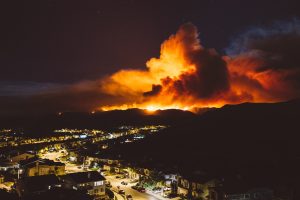
The Scale of the Disaster:
The recent wildfires tearing through Texas have escalated into a historic disaster, now recognized as the second-largest wildfire in U.S. history. The inferno, which has ravaged 1.1 million acres north of Amarillo, has not only claimed the life of an 83-year-old woman, Joyce Blankenship, but also forced widespread evacuations, disrupted power supplies, and even temporarily halted operations at a critical nuclear facility. This calamity has prompted Texas Governor Greg Abbott to issue a disaster declaration for 60 counties, highlighting the severity of the situation.
The Smokehouse Creek Fire, as it has been named, has surpassed the devastation of the 2006 East Amarillo Complex fire, which burned over 900,000 acres. Its magnitude is larger than the state of Rhode Island, underscoring the colossal challenge facing emergency services. The fire’s rapid spread, fueled by dry grass, high temperatures, and strong winds, has left it only 3% contained, according to reports. The West Odessa Fire Department has labeled it not only the largest but also the most destructive fire in Texas history.
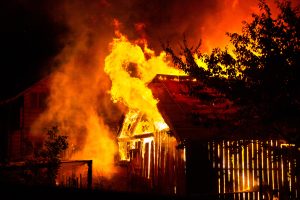
Impact on Communities and Livelihoods:
The wildfires have inflicted profound impacts on local communities, agriculture, and livestock – vital components of Texas’s economy. Over 4,800 homes and businesses are without power, and the agricultural sector faces dire consequences. Hemphill County Emergency Management Coordinator Bill Kendall reported the tragic loss of hundreds of cattle, a significant blow to the state’s panhandle, where over 85% of Texas cattle are raised. The historic Turkey Track Ranch has also suffered immense damage, with 80% of its 80,000-acre property affected, marking a significant loss in terms of livestock, crops, wildlife, and infrastructure.
Human Stories Amidst the Flames:
The wildfires have brought forth stories of loss, urgency, and resilience. Residents like Brittany Struder, faced with the encroaching danger, express the anxiety and uncertainty shared by many as they worry about the safety of their families and homes. The mandatory evacuations and the sight of a landscape turned to what resembles a “lunar landscape” in the aftermath evoke a stark reminder of the wildfire’s ferocity.
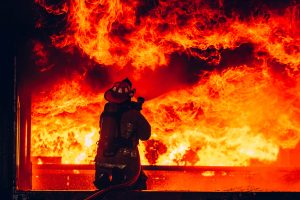
Response and Resilience:
In response to the crisis, Governor Abbott has mobilized additional state resources, including firefighting personnel, fire engines, and air tankers, to combat the fires. The Texas A&M Forest Service, alongside hundreds of firefighters and first responders, is working tirelessly to contain the blaze, with hopes that the forecasted rain and cooler temperatures will aid their efforts. The Red Cross and local emergency services are providing crucial support to affected residents, emphasizing the community’s resilience in the face of adversity.
Broader Implications:
The Smokehouse Creek Fire’s proximity to the Pantex nuclear weapons site, which necessitated a temporary evacuation, underscores the broader implications of such wildfires on national security and safety. Moreover, the fire’s impact extends beyond Texas, with neighboring states like Nebraska, Kansas, and Oklahoma also grappling with wildfires, highlighting a regional crisis that demands a coordinated response.
As Texas battles this unprecedented disaster, the stories of those affected and the relentless efforts of firefighters and emergency personnel underscore the human element in the face of natural calamities. The resilience of the Texas communities, despite the scale of the disaster, shines a light on the path to recovery and rebuilding, even in the aftermath of one of the most significant wildfires in U.S. history.
Coordinated Crisis Management: Navigating Texas’s Emergency Response
In the face of the devastating wildfires sweeping through Texas, the state’s emergency response has been swift and multifaceted, aiming to mitigate the impact of what has become one of the most significant natural disasters in recent history. The state’s declaration of disaster by Governor Greg Abbott has set in motion a comprehensive mobilization of resources, highlighting the critical role of coordinated efforts in disaster management. This segment explores the intricacies of the emergency response, including evacuations, firefighting efforts, community support initiatives, and the challenges faced by emergency responders.
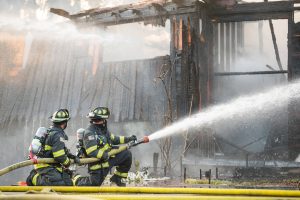
Emergency Response and Evacuation Efforts:
Following the disaster declaration, Texas has launched an extensive emergency response operation. One of the first and most critical steps has been the evacuation of residents from the affected areas. Local law enforcement and emergency management coordinators have worked tirelessly to ensure that residents are moved to safety promptly. Evacuation orders were issued with urgency, emphasizing the immediate danger posed by the rapidly spreading fires. The communication of these orders was clear: residents were to leave their homes with only essential items and seek shelter in designated evacuation centers.
Firefighting Efforts:
The firefighting efforts have been monumental, with more than 94 firefighting personnel, 33 fire engines, and six air tankers deployed to combat the flames. The Texas A&M Forest Service, alongside local fire departments and volunteers, has been at the forefront of these efforts. Firefighters have faced relentless conditions on the ground, battling not only the flames but also the extreme heat and unpredictable winds which have exacerbated the spread of the fire. The deployment of air tankers has been crucial in dropping fire retardant to slow the fire’s advance and protect critical infrastructure and residential areas.
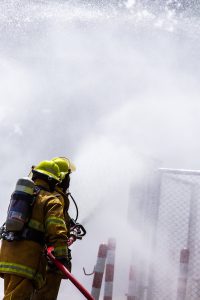
Community Support Initiatives:
In the midst of this disaster, community support initiatives have emerged as a beacon of hope and solidarity. The Red Cross and other humanitarian organizations have set up disaster centers to provide shelter, food, and medical care to those displaced by the fires. Local communities have rallied together, with volunteers offering their homes, time, and resources to support the affected families. Social media platforms have become vital communication tools, connecting those in need with available resources and support networks. These community-led efforts underscore the resilience and compassion that emerge in times of crisis.

Challenges Faced by Emergency Responders:
Emergency responders have faced a myriad of challenges in their efforts to control the wildfires and support affected communities. One of the most significant challenges has been the weather conditions. The combination of dry grass, high temperatures, and strong winds has created a volatile environment where fires can spread rapidly and unpredictably. These conditions have not only made firefighting efforts more difficult but have also increased the risk to responders.
Resource limitations have also posed a challenge. Despite the mobilization of state resources, the scale of the disaster has stretched the capacity of emergency services. The vast area affected by the fires requires a significant number of personnel and equipment to manage effectively. Additionally, the need for evacuation and support for displaced residents has placed a further strain on resources.
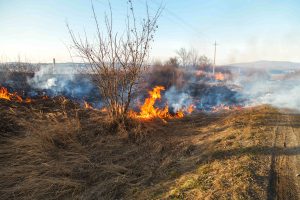
Conclusion:
The emergency response to the Texas wildfires demonstrates the critical importance of preparedness, coordination, and community in facing natural disasters. The state’s swift declaration of disaster and mobilization of resources have been pivotal in addressing the immediate dangers posed by the fires. However, the challenges faced by emergency responders highlight the need for ongoing support, both at the state and federal levels, to manage the current crisis and prepare for future events. As Texas continues to battle these unprecedented wildfires, the courage and resilience of its communities and emergency responders shine as a testament to the human spirit’s capacity to overcome even the most daunting challenge
The Role of Technology in Wildfire Management:
In the modern era, where wildfires are becoming increasingly frequent and intense due to factors like climate change, the role of technology in managing these disasters has never been more critical. Advanced technological solutions offer a beacon of hope, enhancing the capabilities of emergency responders and disaster management teams to mitigate the impact of wildfires. Among the innovators in this field, HQE Systems stands out not only for its development of cutting-edge technologies but also for its expertise in integrating these solutions into cohesive systems that address the multifaceted challenges of wildfire management.
HQE Systems: A Synthesis of Innovation and Integration in Wildfire Management
HQE Systems has carved a niche in the emergency response and disaster management sector by leveraging a combination of drones, artificial intelligence (AI), advanced communication systems, and integration services. Their approach is not just about introducing new technologies into the wildfire management arena; it’s about creating a seamless ecosystem where these technologies work in concert to enhance the efficiency and effectiveness of wildfire detection, monitoring, response, and communication.

Early Detection and Real-Time Monitoring:
The cornerstone of effective wildfire management is the ability to detect fires as early as possible and monitor their progression in real-time. HQE Systems utilizes drone technology integration equipped with thermal imaging cameras and AI algorithms to scan large swathes of terrain for early signs of fire. This capability allows for the identification of potential threats before they escalate into unmanageable blazes, providing a critical window for response.
Once a wildfire is detected, the importance of real-time monitoring cannot be overstated. HQE Systems’ drones relay live data back to command centers, offering detailed insights into the fire’s behavior, spread, and intensity. This information is crucial for making informed decisions on resource allocation, evacuation strategies, and firefighting tactics.
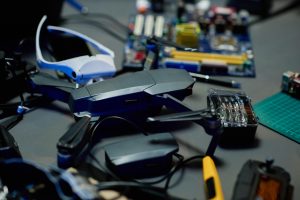
Efficient Communication Through Advanced Integration:
In the chaos that often accompanies natural disasters like wildfires, maintaining clear and efficient lines of communication is paramount. HQE Systems excels in this area by providing advanced communication systems that ensure vital information is shared swiftly and accurately among all stakeholders involved in the emergency response. Their integrated communication solutions are designed to be robust, ensuring functionality even under the most adverse conditions.
The integration aspect of HQE Systems’ offerings is particularly noteworthy. By ensuring that detection, monitoring, and communication technologies work seamlessly together, they enable a coordinated and cohesive response to wildfires. This integration facilitates a level of synergy among emergency responders, firefighting teams, and disaster management officials, leading to more effective strategies and outcomes.
The Transformative Impact of HQE Systems on Wildfire Management:
The adoption of HQE Systems’ technologies and their integration services could significantly transform the landscape of wildfire management. Early detection and integrated real-time monitoring systems allow for a proactive approach to wildfire response, enabling quicker mobilizations and more precise actions to contain and extinguish fires.
Moreover, the enhanced communication capabilities provided by HQE Systems ensure that all parties involved—from frontline firefighters to evacuated residents—are informed and aligned. This not only improves the efficiency of the response efforts but also helps in safeguarding communities and minimizing the overall impact of the wildfires.
Conclusion:
As we face the growing challenge of wildfires in an era of climate change, the integration of advanced technologies in disaster management becomes increasingly vital. HQE Systems stands at the forefront of this technological revolution, offering not just innovative tools but also the crucial integration services needed to make these technologies work together effectively. Their approach to wildfire management exemplifies how the synthesis of technology and integration can create powerful solutions to some of the most pressing environmental challenges of our time. In doing so, HQE Systems is not only helping to fight wildfires more effectively but is also paving the way for a future where technology and integration play a central role in safeguarding our communities and natural landscapes.
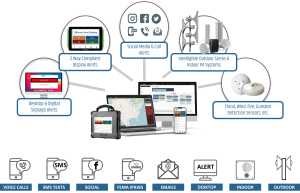
HQE Systems: A Closer Look:
HQE Systems stands at the vanguard of technological innovation, particularly in the realm of disaster management and emergency response. With a suite of advanced tools ranging from drone surveillance to AI-powered prediction models and robust communication tools, HQE Systems is redefining the approach to managing natural disasters like wildfires. This deep dive into their technologies, alongside hypothetical scenarios, illustrates the transformative potential these innovations hold for disaster preparedness and response, especially in contexts like the recent Texas Panhandle wildfires.
Drone Surveillance:
HQE Systems leverages drone technology to provide comprehensive surveillance capabilities over vast and often inaccessible terrains. These drones are equipped with high-resolution cameras and thermal imaging sensors that can detect heat signatures from emerging fires, even in remote areas. This early detection is crucial for initiating a swift response and potentially curtailing the spread of wildfires.
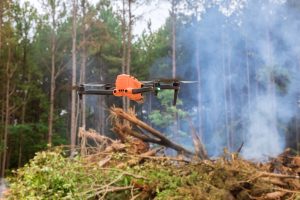
Hypothetical Scenario:
In the early stages of the Texas Panhandle wildfires, drone surveillance could have identified unusual heat signatures in remote areas before they escalated into larger fires. This early detection would have allowed for immediate deployment of firefighting resources to those locations, potentially preventing the spread of the fire to more populated areas and reducing the overall scale of the disaster.

AI-Powered Prediction Models:
Artificial Intelligence (AI) plays a pivotal role in HQE Systems’ approach to disaster management. By analyzing vast amounts of data from various sources, including satellite imagery, weather forecasts, and historical wildfire information, AI-powered prediction models can forecast the potential spread of fires. These models take into account factors such as wind speed, temperature, humidity, and vegetation type to predict how and where a fire might spread, enabling more strategic allocation of firefighting resources.

HQE Systems: A Closer Look
Hypothetical Scenario: Utilizing AI-powered prediction models during the Texas Panhandle wildfires could have provided emergency responders with valuable insights into the fire’s potential path. This foresight would have enabled more effective evacuation planning, minimizing chaos and ensuring the safety of residents in the fire’s projected path. Additionally, predictive insights could have guided the strategic positioning of firefighting teams and equipment, maximizing their impact in containing the fire.
Communication Tools:
Effective communication is the backbone of any disaster response effort. HQE Systems’ advanced communication tools are designed to ensure seamless information flow between all parties involved in emergency response, from command centers to frontline responders and the affected communities. These tools are engineered to be resilient, maintaining functionality even in adverse conditions where traditional communication networks might fail.
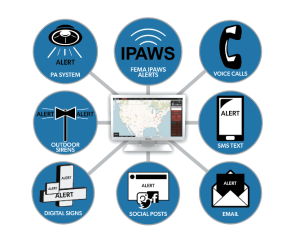
Hypothetical Scenario:
In the midst of the Texas Panhandle wildfires, communication networks could have been compromised due to the fire’s intensity and spread. HQE Systems’ communication tools would have ensured uninterrupted communication channels, enabling real-time updates and coordination among emergency responders. This would have facilitated a more organized evacuation process and allowed for timely, coordinated firefighting efforts, significantly impacting the overall disaster management effectiveness.
Broader Implications for Future Disaster Preparedness and Response:
The adoption of technologies offered by HQE Systems carries profound implications for future disaster preparedness and response efforts. Firstly, it signifies a shift towards more proactive disaster management strategies, where early detection and predictive modeling can significantly mitigate the impact of natural disasters. Secondly, it underscores the importance of resilient communication systems in maintaining coordination and efficiency during emergency responses.
Moreover, the integration of these technologies fosters a more data-driven approach to disaster management, enabling decisions to be made based on real-time information and predictive insights. This not only enhances the effectiveness of response efforts but also contributes to building more resilient communities capable of withstanding future disasters.
In conclusion, the technologies developed or integrated by HQE Systems represent a significant advancement in the field of disaster management. By providing tools for early detection, predictive analysis, and efficient communication, they offer the potential to dramatically alter the course of events in situations like the Texas Panhandle wildfires, ultimately saving lives, preserving property, and enhancing overall disaster preparedness and response capabilities.

Lessons Learned and Looking Forward:
The devastating Texas Panhandle wildfires have left indelible marks on the landscape and the lives of many, serving as a stark reminder of the escalating challenges posed by natural disasters in the era of climate change. Reflecting on this catastrophe, several key takeaways emerge, underscoring the urgent need for enhanced preparedness and the adoption of advanced technologies in wildfire management.
CNN and BBC articles on the incident not only detail the extent of the destruction but also place the Texas Panhandle wildfires within a global context, highlighting similar challenges faced worldwide. These reports emphasize the importance of learning from each incident, adapting strategies, and implementing best practices to mitigate future risks. The role of technology, as showcased by innovative companies like HQE Systems, stands out as a critical element in transforming emergency response and disaster management efforts.
The integration of drone surveillance, AI-powered prediction models, and robust communication tools can significantly improve early detection, real-time monitoring, and efficient coordination during wildfires. These technologies offer the potential to save lives, protect property, and preserve ecosystems by enabling a more proactive and informed response to emerging threats.
As we look forward, it’s clear that a collective effort is required to enhance our resilience to wildfires and other natural disasters. This calls for a concerted action from governments, private sector entities, communities, and individuals to support wildfire prevention efforts and advocate for the integration of advanced technologies in emergency response strategies.
In conclusion, the Texas Panhandle wildfires serve as a critical lesson in the importance of preparedness and innovation. Let us take this opportunity to rally support for integrating cutting-edge technologies into our disaster management frameworks, ensuring that we are better equipped to face future challenges and protect our communities and natural heritage.
HQE Systems is a certified Veteran Owned Company. For more information about HQE Systems Inc. and its emergency management, electronic security, and integration solutions, please visit www.hqesystems.com.

Contact: David Ditto (Early Warning Systems Subject Matter Expert)
Email: David.Ditto@hqesystems.com
Phone Number: (843) 872-7020
____________________
HQE Systems, Inc. | HQE is a Minority-Owned Service Disabled Veteran Owned Small Business (SDVOSB) providing full solutions for: Mass Notification Systems, Electronic Security Systems, Software Development Services, Contract Support, and Prototyping Services. As a brand-agnostic solutions provider, HQE prides itself in providing the BEST solution for the project. HQE possesses over 30+ factory certifications and reseller licenses to ensure our clients receive the highest quality service at the ideal budget. HQE can provide full design, installation, integrations, upgrades, and long-term maintenance support for any size and scope project.

